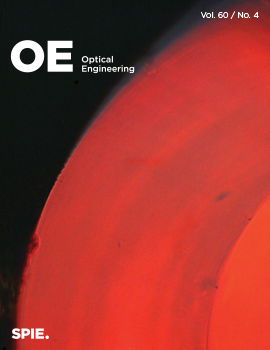Shan Jiang, Junsheng Feng, Fei Han, Zimu Li, Danfeng Xiong, Dehao Niu
Optical Engineering, Vol. 60, Issue 04, 044106, (April 2021) https://doi.org/10.1117/1.OE.60.4.044106
TOPICS: Doppler effect, Wind measurement, LIDAR, Optical engineering, Signal processing, Geometrical optics, Bragg cells, Telescopes, Spatial resolution, Sensors
Speed range is an important specification of coherent Doppler wind lidar (CDWL). However, it is difficult to identify the lower speed bound of CDWL, because the Doppler signal is often overlapped or covered by relative intensity noise (RIN) at the low-frequency end of the spectrum. Therefore, how to distinguish the Doppler signal and the RIN at the low frequency is always an important issue. In the optical information processing, Rayleigh criterion specifies the spatial resolution limit, which is the minimum distance between the two distinguishable Airy disks. Due to the rigorous one-to-one correspondence between optical signals and electrical signals in photoelectric conversion, Rayleigh criterion can be extended to the electrical signal processing. We mapped the Doppler signal and RIN into the Airy disk profile and used the generalized Rayleigh criterion to study the signal resolution limit to define the lower speed bound of the system. The comparative experiments were carried out and the results were consistent with the generalized Rayleigh criterion. It shows that the generalized Rayleigh criterion is available and effective and can be used as a new method for the signal resolution on coherent Doppler wind measurements.



 Receive Email Alerts
Receive Email Alerts